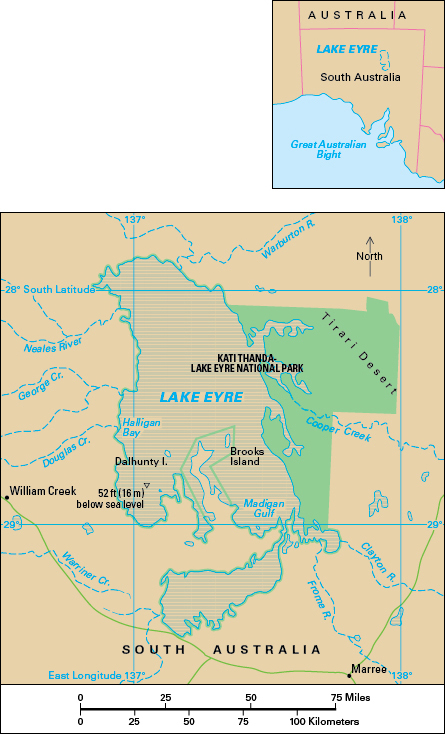Lake Eyre, << air, >> is a large, shallow body of salt water in South Australia. It is Australia’s largest salt lake. The northern part of the lake is 90 miles (145 kilometers) long and 48 miles (77 kilometers) wide. The southern part is 40 miles (64 kilometers) long and 15 miles (24 kilometers) wide. Lake Eyre covers 3,700 square miles (9,600 square kilometers).

Lake Eyre is located in the driest part of Australia and usually holds only a small amount of water. Seasonal rainfalls attract many species (kinds) of water birds. When Lake Eyre fills up after heavy rains, it temporarily becomes Australia’s largest lake. The lake fills to capacity only about twice every 100 years. Lake Eyre is the lowest point of Australia. It lies about 50 feet (15 meters) below sea level.
The Arabana people are the traditional owners of Lake Eyre. They have occupied the Lake Eyre region for thousands of years. The lake was named after Edward John Eyre, a British explorer who first discovered the lake in 1840. Lake Eyre National Park was declared in 1985. In 2013, the park was renamed Kati Thanda – Lake Eyre National Park. Kati Thanda is the traditional Aboriginal name for the lake.
